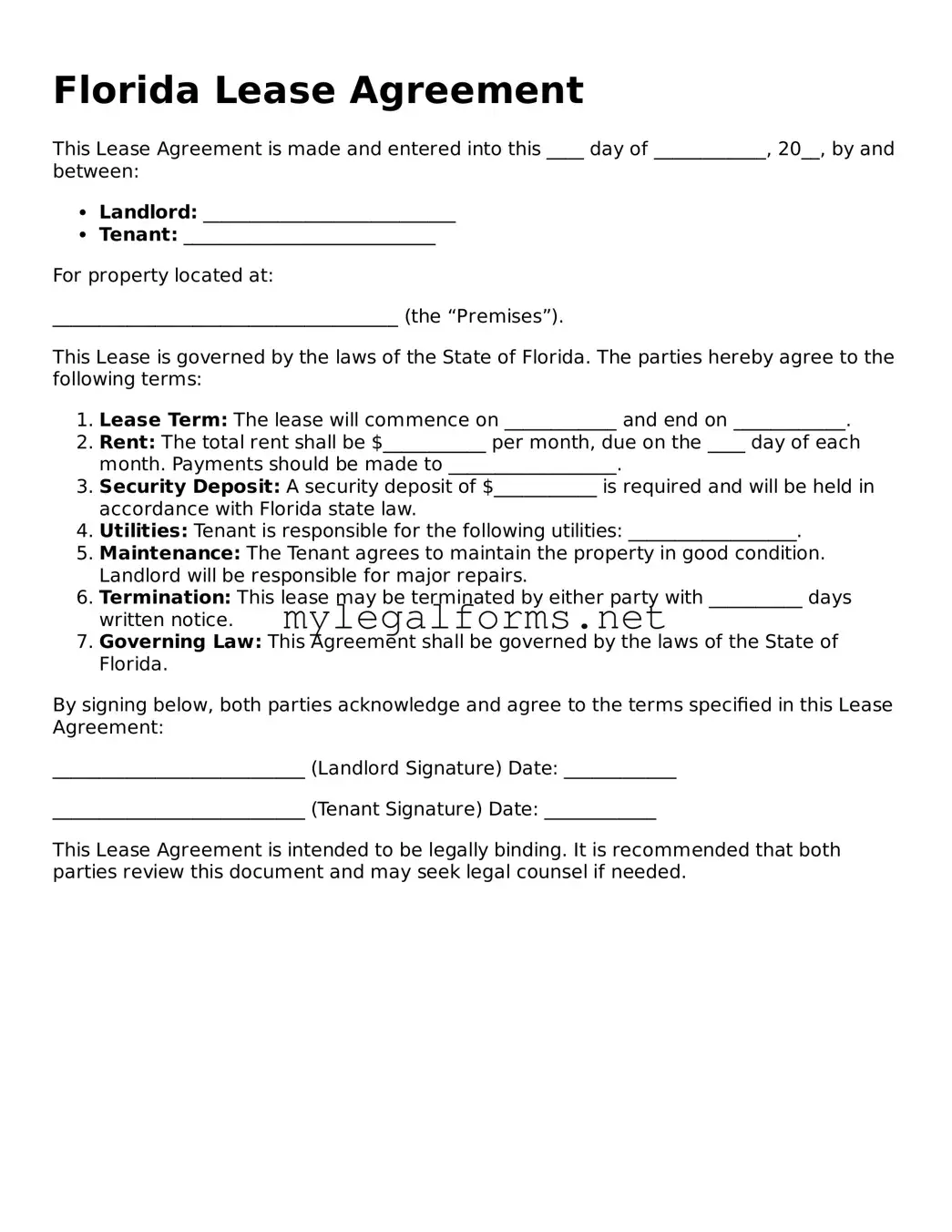Florida Lease Agreement
This Lease Agreement is made and entered into this ____ day of ____________, 20__, by and between:
- Landlord: ___________________________
- Tenant: ___________________________
For property located at:
_____________________________________ (the “Premises”).
This Lease is governed by the laws of the State of Florida. The parties hereby agree to the following terms:
- Lease Term: The lease will commence on ____________ and end on ____________.
- Rent: The total rent shall be $___________ per month, due on the ____ day of each month. Payments should be made to __________________.
- Security Deposit: A security deposit of $___________ is required and will be held in accordance with Florida state law.
- Utilities: Tenant is responsible for the following utilities: __________________.
- Maintenance: The Tenant agrees to maintain the property in good condition. Landlord will be responsible for major repairs.
- Termination: This lease may be terminated by either party with __________ days written notice.
- Governing Law: This Agreement shall be governed by the laws of the State of Florida.
By signing below, both parties acknowledge and agree to the terms specified in this Lease Agreement:
___________________________ (Landlord Signature) Date: ____________
___________________________ (Tenant Signature) Date: ____________
This Lease Agreement is intended to be legally binding. It is recommended that both parties review this document and may seek legal counsel if needed.
